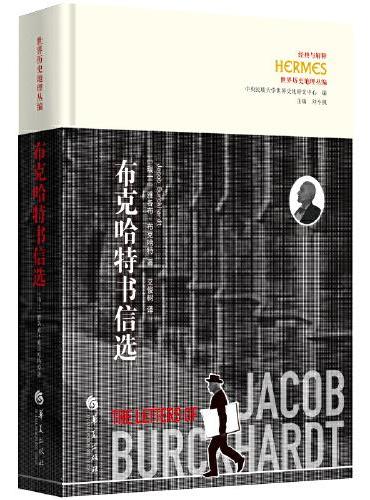新書推薦:

《
藩屏:明代藩王的艺术与权力(柯律格代表作,一部逆转“边缘”与“他者”的明代藩王物质文化史,填补研究空白)
》
售價:HK$
118.8

《
《史记》纵横新说
》
售價:HK$
65.8

《
放不下的痛:运用脑科学修复创伤的40种方法(神经科学专家带你深入了解创伤背后的脑机制,开启全面康复之旅!)
》
售價:HK$
65.8

《
经典力学的数学方法(第4版)
》
售價:HK$
86.9

《
从鸦片战争到五四运动 跟随历史的足迹 见证一个民族的觉醒与抗争
》
售價:HK$
65.8

《
功名诀:左宗棠镜像
》
售價:HK$
195.8

《
布克哈特书信选
》
售價:HK$
94.6

《
DK园艺的科学(100+个与园艺有关的真相,让你读懂你的植物,打造理想花园。)
》
售價:HK$
107.8
|
| 內容簡介: |
|
袁锦昀教授是杰出的旅居巴西华人1957年出生于江苏兴化唐刘镇,1977年考入南京工学院,巴西巴拉那联邦大学数学系终身教授、工业数学研究所所长,巴西计算和应用数学学会副会长,巴西数学会巴拉那州分会会长,巴西科技部基金委数学终审组应用数学和计算数学负责人,巴西巴拉那基金委数学终身组成员。 《实用迭代分析(英文版)(精)》是由其创作的英文版实用迭代分析专著。
|
| 目錄:
|
Preface to the Series in Information and Computational Science
Preface
Chapter 1 Introduction
1.1 Background in linear algebra
1.1.1 Basic symbols, notations, and definitions
1.1.2 Vector norm
1.1.3 Matrix norm
1.1.4 Spectral radii
1.2 Spectral results of matrix
1.3 Special matrices
1.3.1 Reducible and irreducible matrices
1.3.2 Diagonally dominant matrices
1.3.3 Nonnegative matrices
1.3.4 p-cyclic matrices
1.3.5 Toeplitz, Hankel, Cauchy, Cauchy-like and Hessenberg matrices "
1.4 Matrix decomposition
1.4.1 LU decomposition
1.4.2 Singular value decomposition
1.4.3 Conjugate decomposition
1.4.4 QZ decomposition
1.4.5 S T decomposition
1.5 Exercises
Chapter 2 Basic Methods and Convergence
2.1 Basic concepts
2.2 The Jacobi method
2.3 The Gauss-Seidel method
2.4 The SOR method
2.5 M-matrices and splitting methods
2.5.1 M-matrix
2.5.2 Splitting methods
2.5.3 Comparison theorems
2.5.4 Multi-splitting methods
2.5.5 Generalized Ostrowski-Reich theorem
2.6 Error analysis of iterative methods
2.7 Iterative refinement
2.8 Exercises
Chapter 3 Non-stationary Methods
3.1 Conjugate gradient methods
3.1.1 Steepest descent method
3.1.2 Conjugate gradient method
3.1.3 Preconditioned conjugate gradient method
3.1.4 Generalized conjugate gradient method
3.1.5 Theoretical results on the conjugate gradient method
3.1.6 GeueuAzed poduct-tpe methods base u -QC
3.1.7 Inexact preconditioned conjugate gradient method
3.2 Lanczos method
3.3 GMRES method and QMR method
3.3.1 GMRES method
3.3.2 QMR method
3.3.3 Variants of the QMR method
3.4 Direct projection method
3.4.1 Theory of the direct projection method
3.4.2 Direct projection algorithms
3.5 Semi-conjugate direction method
3.5.1 Semi-conjugate vectors
3.5.2 Left conjugate direction method
3.5.3 One possible way to find left conjugate vector set
3.5.4 Remedy for breakdown
3.5.5 Relation with Gaussian elimination
3.6 Krylov subspace methods
3.7 Exercises
Chapter 4 Iterative Methods for Least Squares Problems
4.1 Introduction
4.2 Basic iterative methods
4.3 Block SOR methods
4.3.1 Block SOR algorithms
4.3.2 Convergence and optimal factors
4.3.3 Example
4.4 Preconditioned conjugate gradient methods
4.5 Generalized least squares problems
4.5.1 Block SOR methods
4.5.2 Preconditioned conjugate gradient method
4.5.3 Comparison
4.5.4 SOR-like methods
4.6 Rank deficient problems
4.6.1 Augmented system of normal equation
4.6.2 Block SOR algorithms
4.6.3 Convergence and optimal factor
4.6.4 Preconditioned conjugate gradient method
4.6.5 Comparison results
4.7 Exercises
Chapter 5 Preconditioners
5.1 LU decomposition and orthogonal transformations
5.1.1 Gilbert and Peierls algorithm for LU decomposition
5.1.2 Orthogonal transformations
5.2 Stationary preconditioners
5.2.1 Jacobi preconditioner
5.2.2 SSOR preconditioner
5.3 Incomplete factorization
5.3.1 Point incomplete factorization
5.3.2 Modified incomplete factorization
5.3.3 Block incomplete factorization
5.4 Diagonally dominant preconditioner
5.5 Preconditioner for least squares problems
5.5.1 Preconditioner by LU decomposition
5.5.2 Preconditioner by direct projection method
5.5.3 Preconditioner by QR decomposition
5.6 Exercises
Chapter 6 Singular Linear Systems
6.1 Introduction
6.2 Properties of singular systems
6.3 Splitting methods for singular systems
6.4 Nonstationary methods for Singular systems
6.4.1 symmetric and positive semidefinite systems
6.4.2 General systems
6.5 Exercises
Bibliography
Index
|
|









